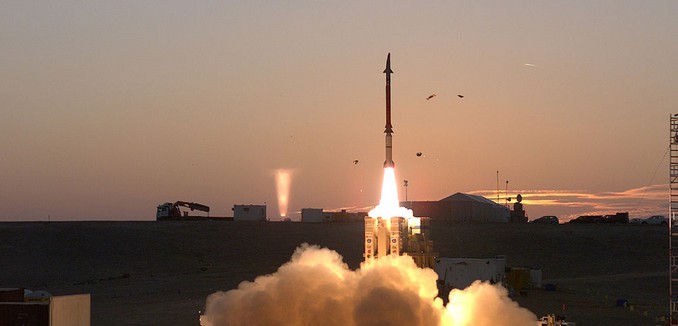Israel and the United States have successfully conducted a landmark operational test of the David’s Sling missile defense system, which is designed to protect against mid-range rocket fire.
Israel’s Defense Ministry announced that Wednesday’s test was conducted by the Israel Missile Defense Organisation and the U.S. Missile Defense Agency at Yanat Sea Range, operated out of the Palmachim Air Base south of Tel Aviv. It was the fifth series of tests on the David’s Sling system, which is also known as the Magic Wand.
“The interceptors were successfully launched, performed all flight phases and engaged the targets as planned,” the ministry said. “Preliminary analysis indicates that test objectives were successfully achieved.”
It added that the test represents an “important milestone for the operational abilities of the State of Israel to protect itself against the expected threats in the region.”
U.S. Missile Defense Agency Director Vice Adm. Jim Syring called the test “a critical step in ensuring Israel has the capability to defend itself from a very real and growing threat.”
“We remain strongly committed to supporting Israel’s development of a missile defense system,” he added.
Alongside the Iron Dome, Arrow 2, and Arrow 3 systems, David’s Sling is part of Israel’s layered aerial defense system, which is being developed in coordination with the United States. The Iron Dome defense system, which was widely successfully deployed during Operation Protective Edge in 2014, provides protection from short and mid-range ballistic threats, typically from the Gaza Strip and Hezbollah in Lebanon.
Meanwhile, other surface-to-air interceptors, including Arrow 3, are designed to counter the threat of longer range missiles such as Iranian Shihab-3 missiles. Together, these systems aim to provide Israel with a protective umbrella to counter all forms of ballistic threats.
Last week, Israel’s Air Force took delivery of its first Arrow 3 missile interceptor, marking a significant step in Israel’s long-range missile defense capability.
(via BICOM)
[Photo: United States Missile Defense Agency / WikiCommons ]




